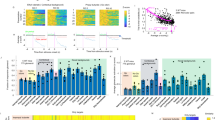Abstract
The demands for odor processing apparatuses have been increasing in fragrance or food industries. However, odors are extremely high dimensional information composed a combination from tens thousands of different odorant molecules, and thus requires vast amounts of computation. Therefore, it is considered learning from a living nose would be an efficient approach. From the odor discrimination experiments, it was found that mice have a feature extraction ability called Attention by which they could focus on the important odorants for odor discrimination. In this paper we propose a neural network model approximated to actual number of neurons and the structure of olfactory system. Simulation experiments of the proposed model were implemented based on the odor discrimination experiments on the living mice. From the simulation results of the model, we confirmed not only the proposed model had ability of Attention, but also the tendency of Attention was consistent with the living mice.
Similar content being viewed by others
References
Gutierrez-Osuna R (2002) Pattern analysis for machine olfaction: a review. IEEE Sensors J 2(3):189–202
Llobet E, Hines EL, Gardner JW, et al (1999) Non-destructive banana ripeness determination using a neural network-based electronic nose. Measurement Sci Technol 10:538–548
Raman B, Yamanaka T, Gutierrez-Osuna R (2006) Contrast enhancement of gas sensor array patterns with a neurodynamics model of the olfactory bulb. Sensors and Actuators: B Chemical 119(2):547–555
Okuhara K, Nakamura T (2005) Explore algorithms in olfactory system of mice (in Japanese). Software Biology 3:20–25
Li Z (1990) A model of olfactory adaptation and sensitivity enhancement in the olfactory bulb. Biological Cybernetics 62:349–361
Cleland TA, Johnson BA, Leon M, Linster C (2007) Relational representation in the olfactory system. In: Proceedings of the National Academy of Sciences USA 104:1953–1958
Haberly LB (2001) Parallel-distributed processing in olfactory cortex, new insights from morphological and physiological analysis of neuronal circuitry. Chemical Senses 26(5):551–576
Heimer L (1968) Synaptic distributions of centripetal and centrifugal nerve fibres in the olfactory system of the rat. An experimental anatomical study. J Anatomy 103:413–432
Buck L, Axel R (1991) A novel multigene family may encode odorant receptors: a molecular basis for odor recognition. Cell 65:17–187
Johnson BA, Leon M (2000) Modular glomerular representations of odorants in the rat olfactory bulb and the effects of stimulus concentration. J Comparative Neurology 422:496–509
Mori K, Yoshihara Y (1995) Molecular recognition and olfactory processing in the mammalian olfactory system. Progress in Neurobiology 45:585–619
Wilson DA (2001) Receptive fields in the rat piriform cortex. Chemical Senses 26(5):577–584
Cleland TA, Linster C (2005) Computation in the olfactory system. Chemical Senses 30(9):801–813
Amari S, Arbib MA (1977) Computation and cooperation in neural nets. Systems Neuroscience, Academic Press, pp 67–117
Author information
Authors and Affiliations
Corresponding author
Additional information
This work was presented in part at the 13th International Symposium on Artificial Life and Robotics, Oita, Japan, January 31–February 2, 2008
About this article
Cite this article
Soh, Z., Tsuji, T., Takiguchi, N. et al. A neural network model of the olfactory system of mice: simulated the tendency of attention behavior. Artif Life Robotics 13, 280–285 (2008). https://doi.org/10.1007/s10015-008-0538-0
Received:
Accepted:
Published:
Issue Date:
DOI: https://doi.org/10.1007/s10015-008-0538-0




